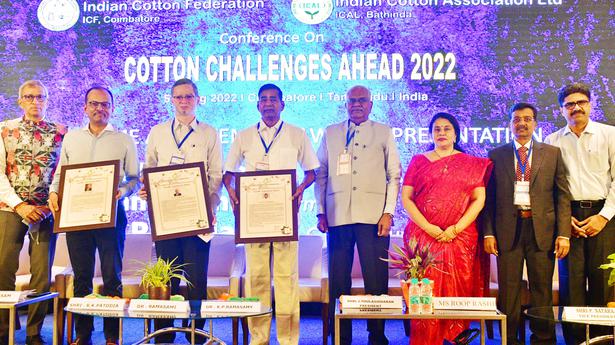
Cotton textile value chain urged to focus on quality
The Hindu
COIMBATORE The entire cotton textile value chain should strive for excellence in quality, said Roop
The entire cotton textile value chain should strive for excellence in quality, said Roop Rashi, Textile Commissioner, here on Friday.
Inaugurating a two-day conference on “Cotton Challenges Ahead 2022”, organised by Indian Cotton Federation, Coimbatore, and Indian Cotton Association, Bathinda, she said good quality would strengthen the entire textile value chain. At a meeting of all stakeholders, held last month by Union Textile Minister Piyush Goyal, the focus was on two aspects - increasing cotton productivity and improving quality.
The challenges faced by the textile sector in the last one year had brought the different segments of the industry together to work for a solution. The Textile Advisory Committee, formed by the Minister, was also looking at short and long-term solutions for issues related to seed, market and branding. She urged the participants of the conference to come out with workable solutions.
T. Rajkumar, chairman of Confederation of Indian Textile Industry, said yarn prices had slumped in the last two months and textile mills were having yarn stocks. The government and the industry were working on several measures for development of the cotton sector. Tamil Nadu’s cotton production this season (2021-2022) was expected to be almost 10 lakh bales and several buyers from the north were purchasing from here.
Chairman of Southern India Mills’ Association Ravi Sam said the number of cotton seed varieties should be reduced to 50 from 1,500. There was a need to increase cotton productivity that had reduced to 460 kg of cotton per hectare from 565 kg per hectare in 2013-2014. “It is time for entire textile value chain to join hands with farmers and the government for the development of cotton sector,” he said.
Atul S. Ganatra, president of Cotton Association of India, added that the Association expected cotton production in 2022-23 season to be 350 lakh bales. It would increase or decrease by 25 lakh bales depending on rain in October. It was difficult to predict price trends as prices depend on demand. “We need to monitor consumption,” he said.
According to Mukul Dev Tayal, president of Indian Cotton Association, seed was important for cotton and farmers were struggling to get quality cotton seeds. The technology of seeds available now was nearly 20 years old. “The need of the hour is to persuade the government to allow import of technology for seed development and funds for agricultural universities to develop seeds,” he said.











